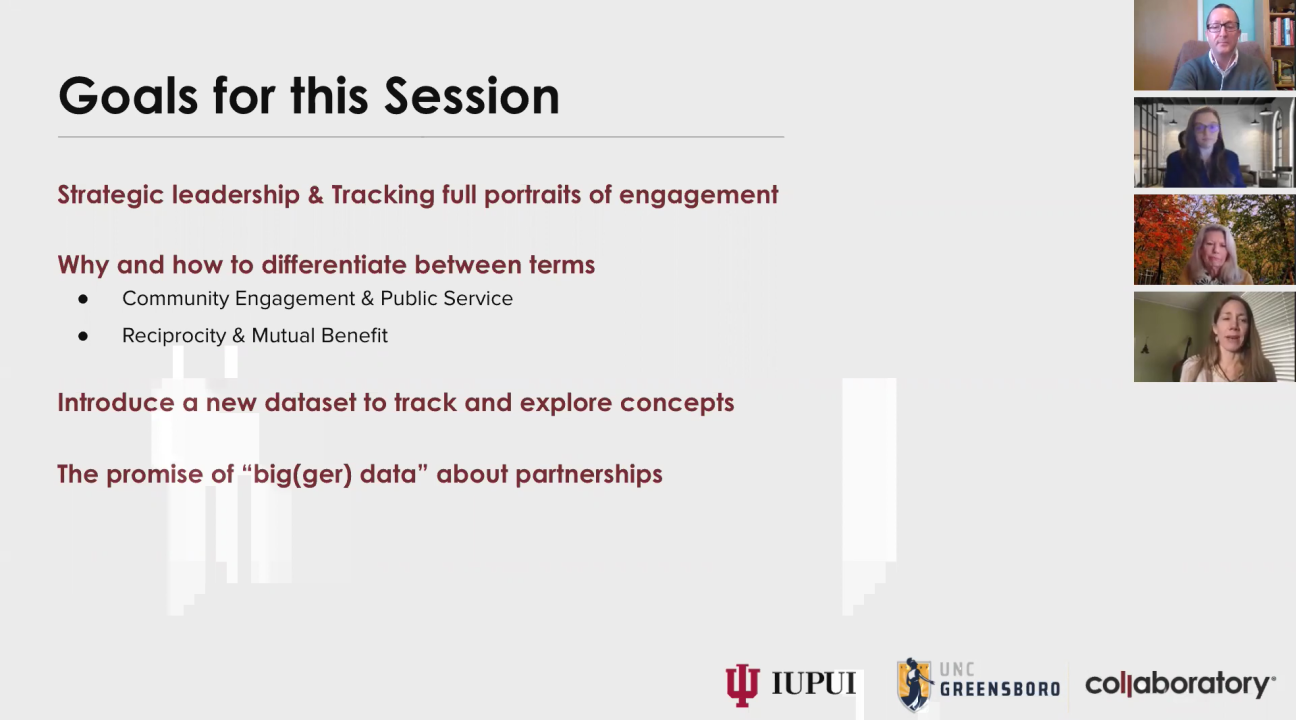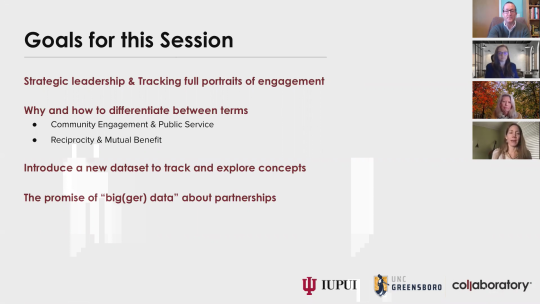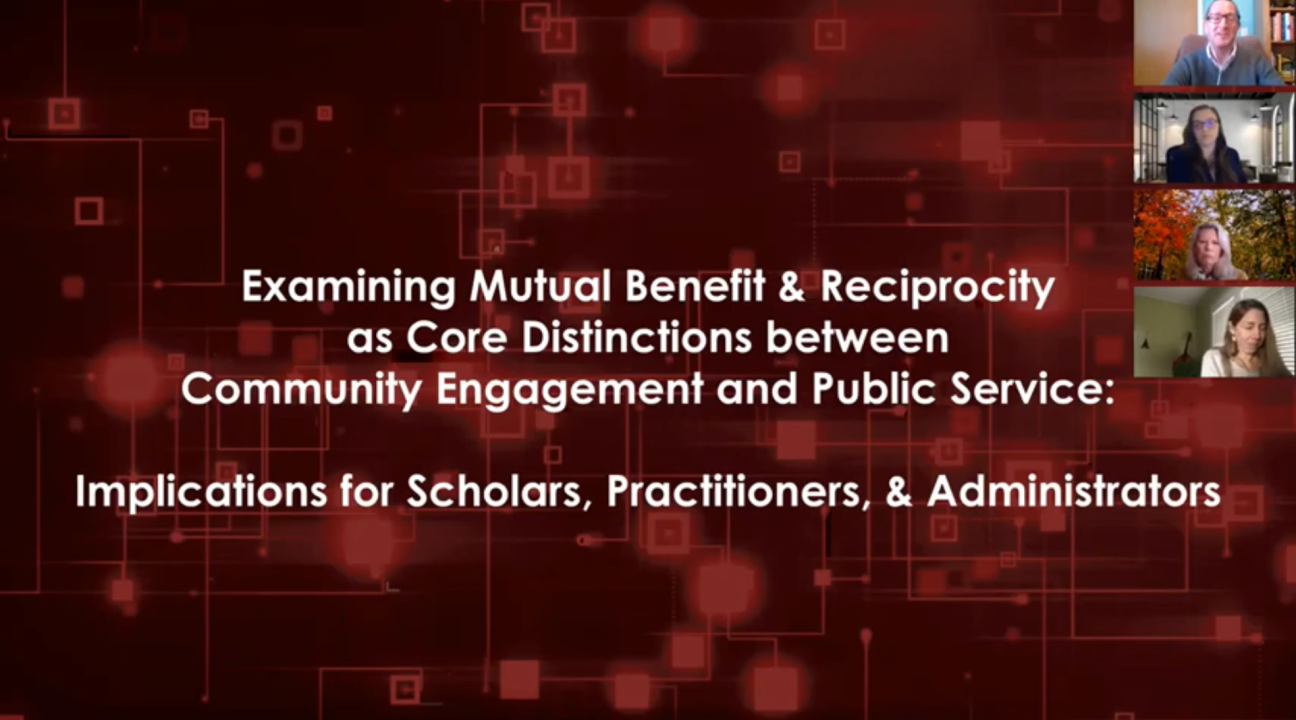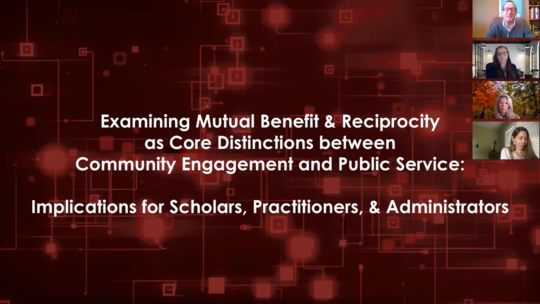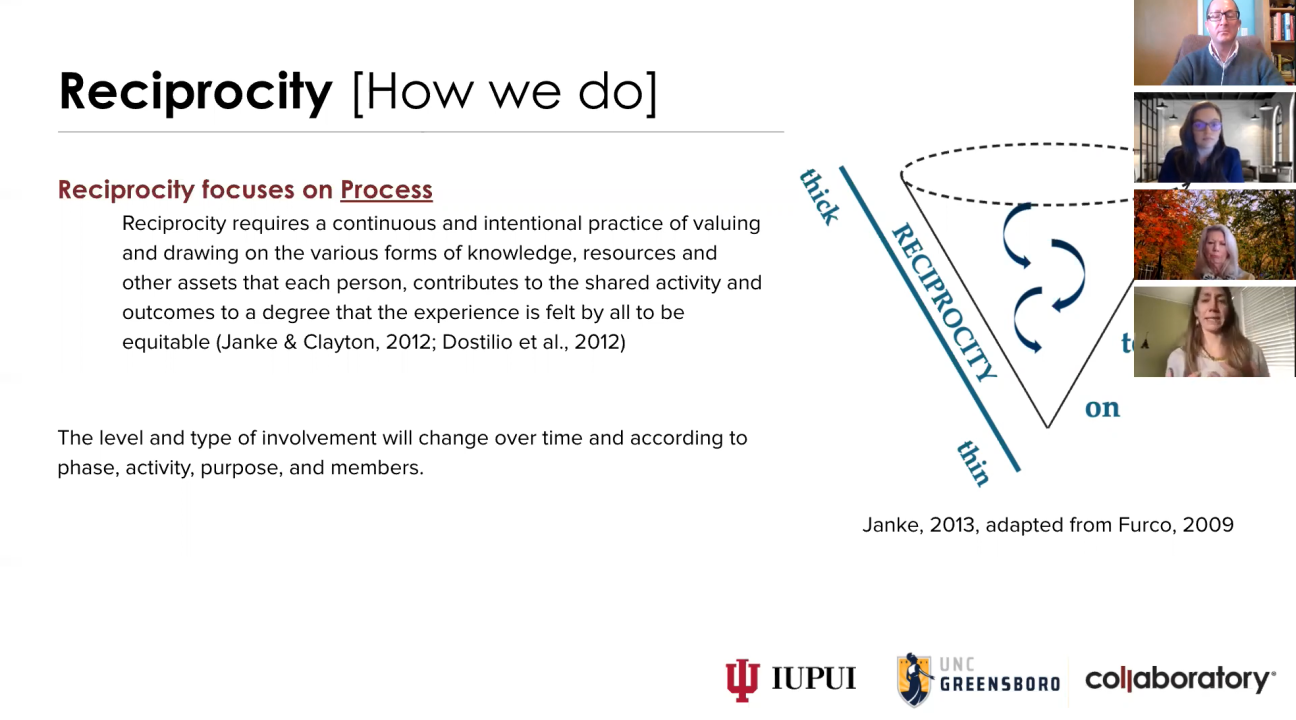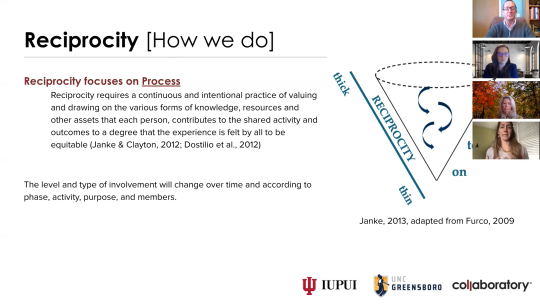Community Engagement Taxonomy: Mutual Benefit and Reciprocity
I attended a Campus Compact webinar called “Examining Mutual Benefit and Reciprocity as Core Distinctions between Community Engagement and Public Service: Implications for Scholars, Practitioners, and Administrators.” It featured Emily Janke (Director of the Institute for Community and Economic Engagement at UNC Greensboro), Kristin Medlin (Director of Research at Collaboratory), Terri Shelton (Vice Chancellor for Research and Engagement at UNC Greensboro), and Kristin Norris (Director of Assessment at the Office of Community Engagement at Indiana University Purdue University Indianapolis). In this webinar, the speakers discussed strategic leadership to support and track community engagement; differentiating between community engagement and public service; differentiating between reciprocity and mutual benefit; as well as introducing datasets to track and explore these concepts.
According to the webinar, fourteen different terms are used to describe community engagement by Carnegie. It is hard to distinguish between and compare across campuses when everyone identifies community engagement in a different way. Something of note that Emily Janke had on her slides was that diverse terms imply a fragmented movement whereas common articulation advances the field (Barker, 2011).
This idea really struck me as within the CSU system and SSU itself, we have different ideas of what it means to do community engaged work. At SSU, when one refers to this, we are often talking about service-learning courses. However, even for service-learning, departments on campus have different ways of defining what that means. As such, the Chancellor’s Office has developed an assessment tool called the CSU Community Engaged Learning Tool to try to categorize what faculty members are doing into a taxonomy. In doing so, they will be able to evaluate and track the type of work that faculty do and compare within and across CSU campuses. For more information or to learn more, check out the FAQs for this assessment.
Something else of particular interest to me in this webinar was this idea of “what would be lost if we were to remove the institution from its location/world?” For example, if SSU disappeared, what would the community be losing and missing out on? What is our portrait of engagement? Not just tracking the numbers, but what can we do to serve the greater good in our community? According to the webinar, institutions need to focus on the outcomes (aims) and outputs (what was done to support the outcomes). In doing so, there’s a focus on the mutual benefit rather than just tracking numbers. Additionally, the webinar speakers discussed the idea of reciprocity as a continuous and intentional process in order to ensure that both the community partner and the university so that the process feels equitable to everyone involved.
In order to know if there’s a mutual benefit and reciprocity involved, to track the numbers, and get a portrait of engagement, we need to really pinpoint what constitutes community engagement in a more systematic way, which is why completing the CSU Community Engaged Learning Tool is so important.
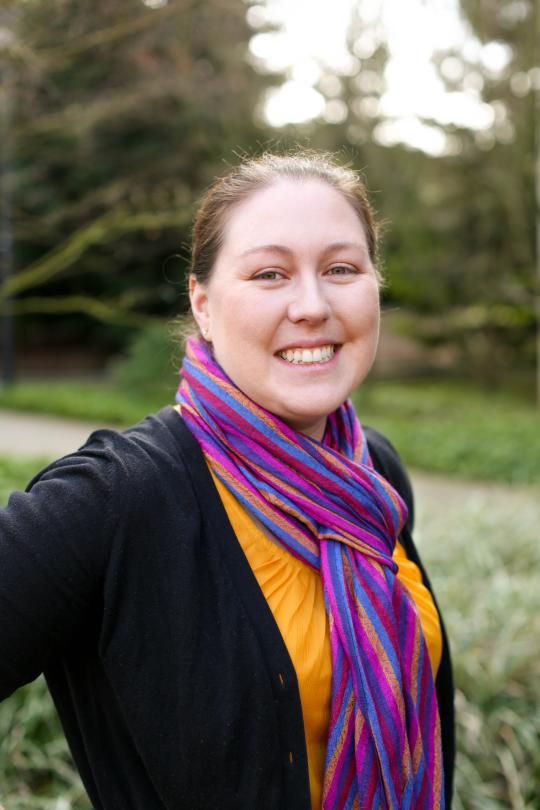
Author: Emily Acosta Lewis


